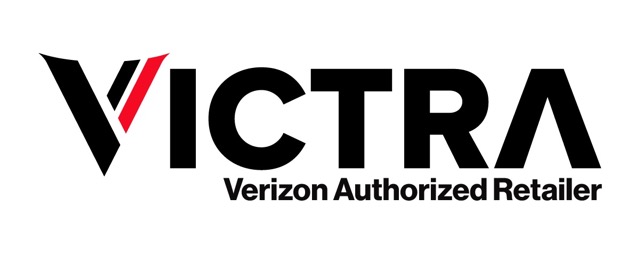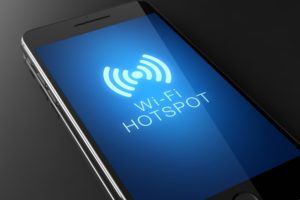Everything You Need to Know About 5G
5G technology is a game changer. It has transformed the way the world communicates and connects and is officially the new standard in wireless connectivity. If you own any type of tech device, it’s likely that you’ve at least heard the term ‘5G’– maybe you even own a 5G-compatible smartphone. But what exactly does the term mean, and how will the next-generation cellular network impact you? You have questions, and we have answers. It’s time to uncover why this technology is so important with these top five things that everyone should know about 5G.
1. What exactly is 5G
Let’s start with the basics. 5G stands for “fifth generation,” meaning that it’s the fifth version of the cellular network. First, there was 1G. Then, came 2G, 3G, 4G, and you guessed it– the greatest mobile network of them all, 5G. This version offers more speed, lower latency and greater bandwidth than 4G and other previous networks. Also, it allows everyone and everything to connect virtually. This means, objects, devices, machines and items that are new to going online are now connected through the power of 5G. While mobile networks once only needed to support cell phones, the list of devices that require bandwidth is rapidly growing. From security cameras, internet-connected vehicles, AR and VR hardware and more, there is a need for 5G in the digital age. As more products go online, the infrastructure must support simultaneous connections with broader coverage.
Let’s break it down further. Here are just a few reasons why 5G is important:
- Massive network capacity
- Increased availability
- Improved efficiency
- Minimal lag when streaming
- Reliable internet in remote locations
- New products and apps with ultrafast speeds
2. How does 5G work?
If you’re wondering what the secret is behind the magic of 5G, then you’ve come to the right place. Don’t worry, we won’t get into all the kilohertz (kHz) and gigahertz (GHz) of radio wave frequencies. However, 5G uses new radio frequencies to run signals in the radio spectrum, and in order to use these new higher (we’re talking millimeter waves) frequencies, carriers must update the equipment on their existing cell towers. Installing new masts and transmitters in every area is a tedious process, so the 5G rollout has been very gradual and consumer access to it depends upon carrier and location. Additionally, it’s important to note that these frequencies experience the challenges of interference by buildings, trees and other obstructions, so smaller cell towers are necessary to get the network flowing through cities at ultrafast speeds. Curious if you have Verizon 5G coverage in your area? Click here!
3. What devices can be used with 5G?
Now for the fun part– putting this massive network capacity to use! Only 5G-enabled devices can be used on a 5G network. But don’t fret, most recently-released smartphones are 5G-enabled, including the iPhone 13, the Samsung Galaxy S22 and the Google Pixel 6 Pro. In fact, 5G is expected to support 1 million connected devices for every square kilometer. To put this into perspective, 4G supports approximately 2,000 connected devices per square kilometer. While most cities don’t even reach this level of population, consider the multiple smart devices that range from wearables, vehicles, security systems, and any other item that might need internet. Wow!
4. 5G vs. 4G: What’s the big difference?
We have much respect for 4G, as it paved the way for mobile broadband, but 5G’s greater bandwidth enables it to support more devices than any previous network, meaning that service outages in crowded areas will be a problem of the past. It also offers much faster data download speeds and low latency, so data can be downloaded and shared in real-time. But how is that any different from 4G? Let’s take a look.
- 5G connects more devices to the internet
- 5G operates on different radio spectrum frequencies
- Some 5G networks use frequencies around 30 GHz or more, versus 4G’s usage of frequencies below 6 GHz
- These higher frequencies support a much larger capacity for fast data and are directional as to not interfere with other wireless signals, versus 4G towers that send data in all directions
- 5G shorter wavelengths allow for much smaller antennas
5. What does 5G mean for the future of technology?
Lower latency means that 5G can be used to control devices from a distance without lag, improving the performance of robots, drones, self-driving cars and other new technologies. It will also likely play a role in the rise of the metaverse, as low latency and less lag time will allow for a more realistic augmented reality (AR) experience. We are living in the future, and 5G plays an exciting role in virtual lifestyle advancements.
Although 5G is still in its early stages, Verizon customers are already experiencing its high-tech capabilities. Verizon has installed 5G Ultra Wideband in over 2,700 cities across the country, allowing over 200 million people the ability to listen, stream and video chat in 5G quality. Click here to learn more about Verizon’s cutting-edge 5G network, and visit your local Verizon Victra store to snag a 5G device to take a step into the ultrafast network.
is a skilled Web Developer and Designer. He builds and designs websites that focus on best UI/UX practices. Justin is also a Verizon Product Expert at Victra, helping customers with Verizon products and services. His mix of design, coding, product, and general knowledge makes him a valuable and knowledgeable team member.





